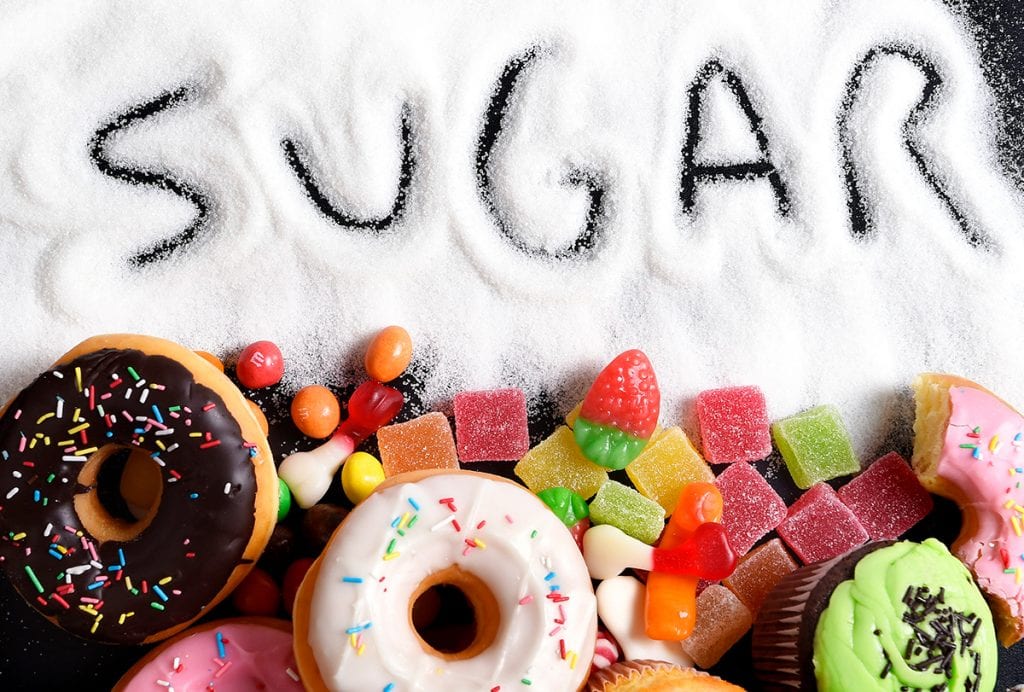Surviving Sugar During the Holidays
Starting with Halloween most people (at least in America) have a hard time resisting sugar and recovering from the indulgence. Well, we are here. Holiday Season. Sugar is everywhere!!!! I remember one year I took my nephews out trick-or-treating . I was being such a good Aunt. It was such a sweet time together. I ate 3 Snickers and a KitKat. The next day I felt sluggish and tired. I had a hard time thinking and felt heavy in my body. So before you let yourself go down the slippery slide from “just one Snickers” to the daily candy and deserts resulting in many health issues, here are some detox recipes and plans.
Tips for Cutting Back on Sugar
If you’re used to regularly eating sugary foods like cake, ice cream, sweetened breakfast cereal, candy, and cookies and regularly drink sugar-sweetened beverages, it may take time to reduce your reliance on added sugar.
Fortunately, even making small changes to your intake can significantly affect your overall health. Follow these helpful tips to slowly reduce your added sugar intake over time.
- Swap sweetened drinks for water. Cut out sugary soda, fruit juice, and energy drinks and replace them with plain or sparkling water. If you need a boost of flavor, add some mint or slices of lemon or lime.
- Start your day right. Instead of reaching for that colorful box of sugary cereal or a frosted doughnut, fuel your body with a protein and fiber-rich omelet made with veggies and a side of avocado and fresh berries.
- Read labels. Many foods and condiments are sneaky sources of added sugar. Read the labels of products like salad dressings, barbecue sauce, oatmeal packets, and marinara sauce to scan for added sugar.
- Choose unsweetened snacks. Your favorite granola or protein bar may be packed with added sugar. Choose whole, nutrient-dense snacks like nuts and seeds, whole fruit and nut butter, hummus and veggies, or hard-boiled eggs when you need a refuel.
- Rethink dessert. Instead of reaching for your favorite pint of ice cream or go-to candy bar after dinner, check in with yourself. Are you truly hungry or is your nightly fix a hard-to-break habit? If you are truly hungry, reach for something high in protein and healthy fat like a handful of macadamia nuts or unsweetened Greek yogurt with berries and unsweetened coconut.
- Focus on your whole diet. Optimizing the nutrient-density of your overall diet can help improve health and may help you cut back on added sugar. Focus on whole, unprocessed foods like vegetables, fruits, beans, nuts, seeds, poultry, eggs, and seafood.

How to Manage Side Effects
Here are some tips to help you beat the side effects and avoid — or at least limit — some of the symptoms related to cutting sugar out of your diet.
Be realistic
Although cutting all sources of added sugar might be helpful for some people, others do best by focusing on reducing or cutting out one source of added sugar at a time.
For example, if the main source of added sugar in your diet is soda, try cutting back on or cutting out sugary beverages from your diet first before moving on to other sources.
There are many “detoxes” that involve cutting all added sugar from your diet for a specific time period.
While these might be beneficial for some people, the focus should be on reducing your added sugar intake for life — not just a set time period.
To do that, you must do what works best for you. This may mean slowly cutting out added sugar over time rather than eliminating all sources at once.
Eat protein-rich foods
Add protein to every meal to help you avoid hunger and low energy levels during your sugar detox.
Research suggests that eating protein can promote feelings of fullness, which can help you manage food cravings.
This will help you avoid the temptation to reach for a candy bar or other fix.
Healthful sources of protein include fatty fish, lean meats, eggs, beans, legumes, and nuts.
Increase your dietary fiber intake
Eating high fiber foods may help you stave off hunger and cravings. They take longer to digest, causing you to feel fuller for longer.
High fiber foods also contribute to healthy blood sugar regulation. Keeping your blood sugar levels stable may help prevent cravings.
Aim for high fiber vegetables, beans, and legumes.
Pairing high protein and high fiber foods is best for healthy blood sugar control. Examples include mixing high fiber veggies like broccoli into your eggs or spooning some pumpkin seeds over your oatmeal.
Stay hydrated
Staying optimally hydrated is essential for overall health and may help you manage sugar cravings.
Replacing drinks high in sugar, such as soda and energy drinks, with water can help reduce the sweetness and overall calorie intake.
Plus, reducing your sugary beverage intake may help reduce sugar cravings.
Drinking water can likewise help keep your bowel movements regular. This is especially important when you increase your fiber intake.
Fiber-rich foods and adequate water intake are needed to help keep stools soft and move them through your digestive system, preventing constipation.

Avoid artificial sweeteners
Switching to artificial sweeteners may seem like a good idea when you’re giving up added sugar, but it can derail your efforts.
Research suggests that certain artificial sweeteners may lead to metabolic changes that may increase cravings, food intake, and weight gain.
Reducing your intake of sweet foods — even those that are sugar-free — may be the best way to cut it from your diet.
Manage your stress levels
Research shows that stress affects food preferences and increases cravings for sweet foods.
Sugar also appears to have a calming effect on stress hormones, which contributes to your desire for is when feeling stressed.
Keeping your stress in check will make it easier to cut it from your diet and help keep cravings under control.
Taking a short walk, talking to a friend, and reading a book are a few simple ways to relax.
Exercise
Exercise is beneficial in several ways when cutting added sugar from your diet.
It can help increase energy and reduce stress, which can help combat symptoms like fatigue, low energy levels, and stress-induced cravings that may occur when decreasing your added sugar intake.
A 2015 studyTrusted Source also found that short bouts of exercise, such as a brisk 15-minute walk, reduced cravings for sugary foods.
Remember to start slowly and speak to your doctor before you start exercising if you have any preexisting medical issues.
Focus on overall diet quality
Studies show that improving overall diet quality can help minimize cravings for sugary foods and enhance cravings for healthier foods.
For example, eating fewer foods high in added sugar like ice cream, cake, and cookies and increasing your intake of nutrient-dense foods like beans, vegetables, fish, and whole fruits may help reduce your reliance on added sugar and help you crave healthier foods.
Get enough sleep
Insufficient sleep could worsen symptoms of added sugar reduction, such as fatigue, cravings, and low mood.
Not getting enough sleep may increase cravings for sugar and other unhealthful comfort foods.
Sleep deprivation alters appetite-regulating hormones and may enhance cravings for highly palatable foods, such as those high in added sugars.
Getting a good night’s sleep may help you:
- make healthier food choices
- lower your stress levels
- boost your energy levels
- improve your concentration and memory
Avoid daytime napping and aim for the same bedtime every night.
Eat something bitter
Eating bitter foods may help prevent sugar cravings by acting on receptors in the brain that drive sugar intake, according to research.
You can make your own bitters or choose bitter foods, such as coffee, arugula, or broccoli raab (rapini).
Stay motivated
Giving up or reducing sugar can be difficult, especially if your diet was high in added sugar, so go easy on yourself.
Try writing down your motivators for giving up sugar. Look at these when you feel a craving for sugar.
If you start adding back foods and beverages high in added sugar, remind yourself of your motivations, you can always try again and learn from your experiences.
For instance, if you find that the cravings are worse during certain times of the day, schedule activities to keep yourself busy during that time, or be prepared with high protein snacks and water.
The most important thing is to decrease your overall intake of added sugar. It’s important to note that occasionally enjoying a sugary treat will not derail your efforts or overall health. It’s your overall diet quality that matters most.
When you just HAVE to have it
Rather than adding an enormous amount of stress to yourself by trying to make yourself resist, go ahead and give in, but just to certain sweets at certain times. Keep high quality dark chocolate at hand when needed. Give yourself fruit after your meals. Drink a refreshing mint water.
Stay connected for free resources to expand your health and vitality with non-allopathic remedies and natural CBD solutions.

